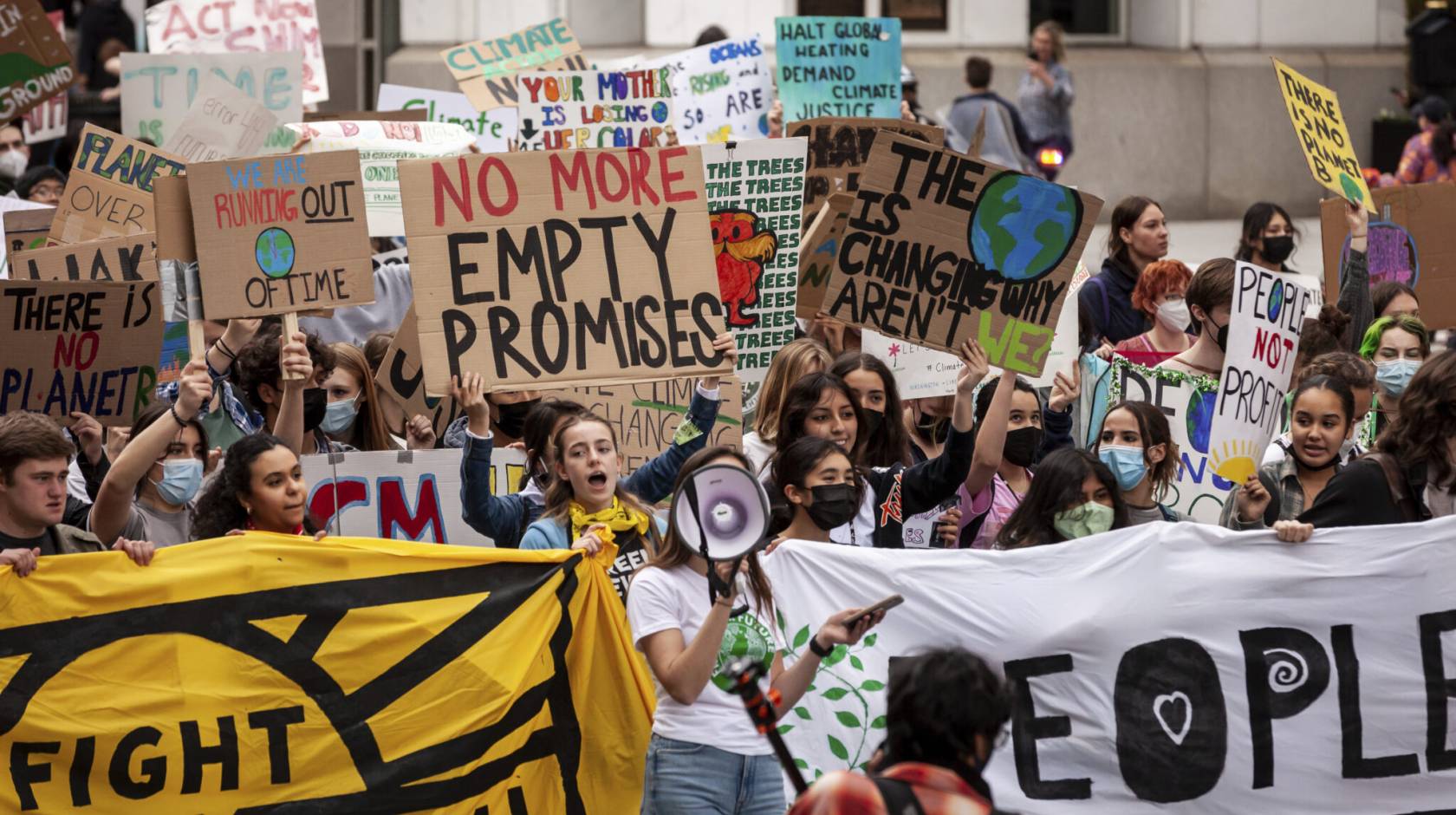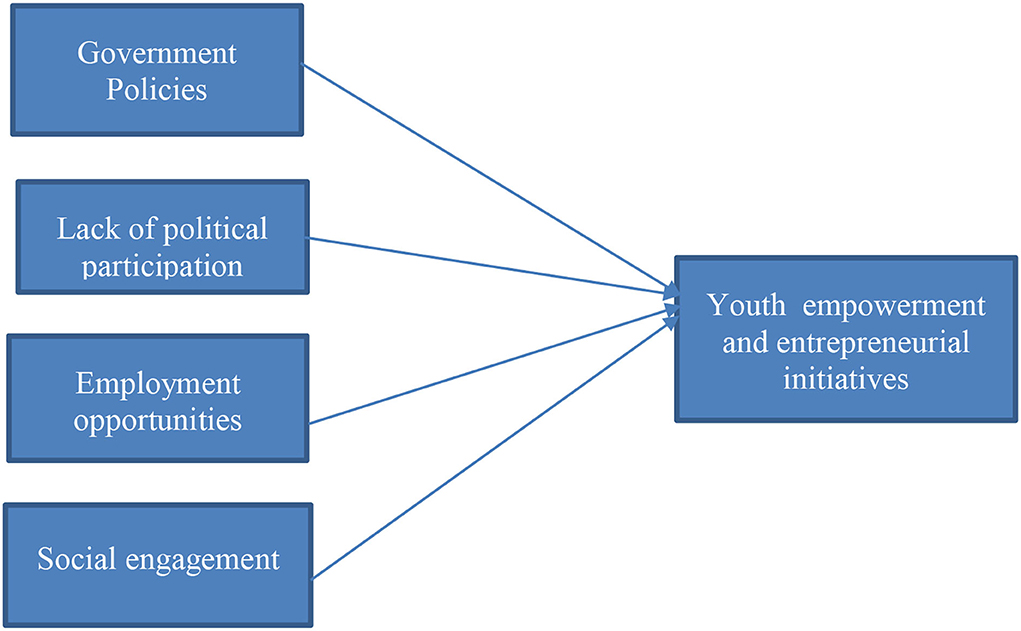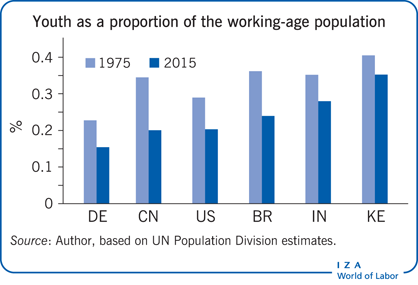Do you ever wonder why the headlines are filled with stories of young people taking to the streets, demanding change? You’re not alone.
Youth political unrest is not just a fleeting trend—it’s a significant and growing phenomenon worldwide. This article dives into the latest statistics that reveal the depth and scale of this issue. You’ll discover why young voices are louder than ever and how their actions are shaping the future.
These numbers tell a story of urgency, passion, and a desire for change that could impact your community and beyond. Stay with us as we unravel the facts and figures that paint a compelling picture of the world’s youth in action. Are you ready to see the world through their eyes? Let’s explore these statistics together.

Credit: www.universityofcalifornia.edu
Rising Youth Political Activism
Youth political activism is on the rise worldwide. Young people are no longer silent about issues affecting them. Their voices are louder than ever. They demand change and action from leaders. This growing trend is reshaping political landscapes. More young people are getting involved in politics than before.
Understanding The Shift
Youth are more aware of global issues today. Social media plays a big role. Information spreads quickly, reaching millions in seconds. Young minds are curious and eager to learn. They question the status quo. They want their opinions to matter. This shift is powerful and significant.
Causes Of Youth Activism
Economic challenges often drive youth activism. Many face unemployment and lack of opportunities. Climate change is another factor. The planet’s future is at stake. Young people feel they must act now. Social justice issues also spark their interest. They fight for equality and fairness.
Social media is a key tool for young activists. It connects them globally. They share ideas and strategies. Campaigns can go viral overnight. This empowers youth to organize quickly. Their messages reach a wider audience. Leaders and policymakers take notice.
Challenges Faced By Young Activists
Youth activists face many hurdles. Sometimes, their efforts are not taken seriously. They struggle with limited resources. Gaining access to decision-makers is tough. Despite these challenges, they persist. Their determination is strong. They inspire others to join their cause.
The Future Of Youth Activism
The future looks promising for youth activism. Young people are more engaged than ever. Their influence continues to grow. They are shaping the world they live in. Their involvement is crucial. They hold the power to create lasting change.

Credit: www.frontiersin.org
Factors Driving Unrest
Rising unemployment and lack of opportunities fuel youth political unrest worldwide. Statistics show increasing dissatisfaction among young people. Economic instability, inequality, and social issues are major factors driving these protests.
Youth political unrest is not just a fleeting concern; it’s a complex issue shaped by various underlying factors. Understanding these factors can help us address the root causes of discontent among young people. You might be wondering why young people are taking to the streets or voicing their frustrations online. Let’s break down the primary factors driving this unrest.Economic Discontent
Economic instability is a major trigger for youth unrest. Many young people feel the pinch of unemployment and underemployment. It’s frustrating when you have the skills but can’t find a job that matches your potential. Think about the burden of student loans and rising living costs. These economic pressures can make you feel like you’re stuck in a cycle with no escape. When economic opportunities are scarce, discontent grows rapidly.Social Inequality
Social inequality is another significant factor fueling unrest. When you see others getting ahead while you struggle, it’s easy to feel excluded. This feeling intensifies when there’s a visible gap between different social classes. Consider the access to education and healthcare. If you feel denied basic rights, it sparks anger and a desire for change. Social inequality creates a divide, making youth feel marginalized and unheard.Political Exclusion
Political exclusion can leave young people feeling powerless. Many feel their voices are not represented in the political arena. If you feel ignored by those in power, it’s natural to seek alternative ways to make your voice heard. Look at the barriers to entering politics or influencing policy. When young people face obstacles in engaging politically, it breeds frustration. Ask yourself, “How can I drive change if I can’t even get a seat at the table?” Do these factors resonate with your experiences or observations? Understanding these drivers can empower you to advocate for the changes needed to address youth political unrest effectively.Regional Hotspots
Youth political unrest statistics reveal rising tensions in various regions. Many young people express frustration over limited opportunities and political instability. These statistics highlight the urgent need for addressing youth concerns.
Youth political unrest has become a significant concern worldwide, with certain regions emerging as hotspots. These areas exhibit unique challenges and dynamics that contribute to youth discontent. Understanding these regional nuances is crucial for anyone interested in global political trends. ###Middle East And North Africa
The Middle East and North Africa (MENA) region has long been a focal point for youth political unrest. High unemployment rates and limited political freedoms fuel frustration among young people. Did you know that nearly 30% of youth in the region are unemployed? In countries like Egypt and Tunisia, young people are leading the charge for change. Social media has empowered them to organize protests and demand reforms. Are you aware of how these movements are reshaping the political landscape? ###Latin America
Latin America faces its own set of challenges with youth unrest. Economic inequality and corruption are major grievances. In places like Chile and Colombia, young people have taken to the streets to voice their dissatisfaction. The role of education in these protests is significant. Many young activists are students demanding better educational opportunities. How do you think improved education could alter the political climate in this region? ###Sub-saharan Africa
Sub-Saharan Africa’s youth unrest is deeply tied to socio-economic issues. Many young Africans are frustrated by poverty and lack of employment opportunities. In countries like Nigeria and South Africa, youth are actively protesting for better governance. Interestingly, technology plays a crucial role in mobilizing these protests. Mobile phones and internet access provide a platform for organizing and spreading awareness. Could technology be the key to amplifying youth voices in these regions? Understanding these regional hotspots can offer valuable insights into the broader patterns of youth political unrest. As you reflect on these examples, consider how young people in your community are engaging with political issues. What lessons can be learned from these global movements to address local challenges?
Credit: blog.ephorie.de
Impact Of Social Media
Social media plays a crucial role in youth political unrest. It serves as a powerful tool for communication and organization. Young people use platforms to voice opinions, share information, and mobilize protests. The speed and reach of social media can amplify their impact. This section explores how social media influences youth political activism.
How Social Media Connects Activists
Social media connects activists globally. Young people share experiences and strategies. This fosters solidarity and unity. Hashtags unite voices across borders. Information spreads quickly, reaching large audiences. This connection strengthens movements.
Social Media As A Tool For Mobilization
Mobilizing protests is easier with social media. Events are organized swiftly. Messages spread in real-time. Activists coordinate actions effectively. This rapid mobilization challenges traditional structures. It creates dynamic movements.
Influence Of Social Media On Public Opinion
Public opinion can shift through social media. Young voices gain visibility. They influence discussions and narratives. Viral content changes perceptions. This power shapes political landscapes. It creates new dialogues.
Social Media’s Role In Information Dissemination
Information dissemination is fast on social media. News reaches users instantly. Activists share updates regularly. This keeps followers informed. Misinformation is also a challenge. Accurate reporting becomes vital.
Challenges Of Social Media In Political Unrest
Social media faces challenges in political unrest. Misinformation spreads easily. Online censorship is a threat. Privacy concerns arise frequently. Balancing openness with security is crucial. These issues impact effectiveness.
Government Responses
Youth political unrest is a global concern. Governments face the challenge of addressing the aspirations of young populations. Their responses to this unrest can vary widely. Some choose harsh measures, while others open lines of communication. How they respond can impact future stability and trust.
Repression Tactics
Some governments use force to control unrest. They deploy police and military to disperse protests. Harsh laws are enacted to curb dissent. Arrests and detentions become frequent. This approach aims to silence opposition quickly. Yet, it often increases anger among youth. It can lead to more unrest and long-term instability.
Dialogue And Reform
Other governments choose to listen. They engage in dialogue with young leaders. This approach aims for understanding and cooperation. Reforms are introduced to address core issues. Education, employment, and representation are key focus areas. Engaging youth in policy-making fosters trust. It promotes peace and long-term growth. Dialogue can transform unrest into positive change.
Statistical Trends Over Time
Youth political unrest has evolved dramatically over the years. Understanding these changes requires looking at statistical trends. Data helps us see shifts in youth activism and political engagement.
These trends reveal how young people express their political views. They also show how they react to social and economic challenges. By examining these statistics, we gain insights into the motivations behind youth political unrest.
Historical Comparisons
Decades ago, youth political unrest had distinct features. Protests in the 1960s often focused on civil rights and war. These movements were largely organized through face-to-face meetings and physical gatherings.
Today, technology plays a major role. Social media has changed how young people organize and communicate. This shift marks a significant departure from past methods of protest.
Current Patterns
Recent statistics highlight new patterns in youth political unrest. Many young people now use digital platforms to voice their opinions. Online activism has become a powerful tool for organizing protests and rallies.
Data shows an increase in global youth participation in political movements. Issues like climate change and social justice attract young activists worldwide. This trend reflects a growing awareness and willingness to engage in political discourse.
Consequences For Future Generations
Youth political unrest statistics reveal troubling patterns affecting future generations. Rising dissatisfaction among young people leads to increased activism. This shift in political engagement can shape policies and governance, impacting societal norms and values.
Youth political unrest is more than just a fleeting headline. It has tangible effects that ripple through future generations. As young people increasingly voice their discontent, the implications for tomorrow’s leaders and citizens are profound. This section explores how these dynamics shape the future, offering insights into potential changes and challenges.Economic Impact On Future Generations
When political unrest disrupts economies, the effects are felt for years. Young people facing limited job opportunities today might struggle with financial stability later. Consider how local businesses suffer during protests, leading to fewer internships and job openings. This economic instability can affect educational opportunities. When families struggle financially, they may prioritize immediate needs over long-term goals. This can limit young people’s access to higher education, which can hinder career prospects.Social Trust And Community Cohesion
Political unrest often breeds distrust in institutions. When today’s youth witness ineffective governance, they may become skeptical of future political systems. This skepticism can weaken social cohesion, as people become less willing to engage in community initiatives. Communities that experience unrest may also see increased divisions. Young people might grow up in environments where polarization is the norm. This can make it challenging to foster unity and cooperation in the future.Mental Health Implications
The psychological toll of political unrest is significant. Young individuals exposed to violence and instability may experience anxiety and depression. These mental health challenges can extend into adulthood, affecting their overall well-being. Consider your own mental state during uncertain times. Imagine the compounded stress if this were your everyday reality. Future generations might carry these mental health burdens, influencing their capacity to thrive.Political Engagement And Activism
Youth unrest can also inspire positive change. Many young people become more politically active, driving movements for reform. This engagement can lead to more informed and active future citizens. Reflect on your own motivations to get involved in causes you believe in. Imagine a generation fueled by personal experiences of unrest, ready to advocate for change. This active participation can lead to more responsive and inclusive governance.Educational System Reforms
Unrest can highlight deficiencies in educational systems. Young people often demand curricula that address current social and political issues. This push can lead to reforms that better prepare future generations for the challenges ahead. Think about the skills you wish you had learned in school. Imagine if educational systems adapted to teach those skills proactively. This could empower future generations with the tools needed to navigate a complex world. As you consider the impact of youth political unrest, think about how you can contribute to shaping a more stable and equitable future. The actions we take today will influence the lives of those who come after us.Global Initiatives And Solutions
Youth political unrest statistics highlight the global need for initiatives addressing social challenges. These solutions aim to foster dialogue and understanding among young people. Promoting peace and engagement can transform political landscapes worldwide.
Global youth political unrest is a pressing issue that demands immediate attention and effective solutions. Young people around the world are increasingly voicing their dissatisfaction with political systems that they feel exclude or ignore them. Addressing this unrest requires global initiatives and solutions that empower youth and encourage international cooperation. Let’s explore some of these strategies and their potential to create positive change.International Cooperation
International cooperation is crucial in addressing youth political unrest. Countries working together can share insights and strategies to manage unrest effectively. Organizations like the United Nations and the European Union have launched programs aimed at promoting political stability by involving young people in decision-making processes. You might wonder how these collaborations work. They often involve setting up global forums where youth leaders can discuss their concerns and propose solutions. Such platforms foster a sense of belonging and encourage young people to engage constructively in political processes.Youth Empowerment Programs
Youth empowerment programs play a vital role in reducing political unrest. These programs aim to equip young individuals with the skills and knowledge they need to participate actively in politics. Governments and NGOs worldwide have introduced initiatives such as leadership workshops, mentorship schemes, and educational campaigns. For instance, in my own city, a local NGO runs a program that connects young people with mentors in political fields. This program has not only increased political awareness but also inspired many participants to become active in local governance. Imagine the impact if such programs were available to every young person worldwide. You might ask, what can you do to support these initiatives? Start by advocating for youth programs in your community. Encourage local leaders to invest in the future by empowering the youth. Your voice can make a difference in shaping a more inclusive political landscape. Ultimately, global initiatives and solutions require collaboration, commitment, and creativity. By focusing on international cooperation and youth empowerment, we can address the root causes of unrest and pave the way for a more stable and inclusive future. What steps will you take to contribute to this vital mission?Frequently Asked Questions
What Causes Youth Political Unrest Globally?
Youth political unrest often stems from economic inequality, lack of opportunities, and political disenfranchisement. Young people may feel ignored by policymakers. Social media amplifies their voices, fueling movements for change. Education and employment access are critical factors. Addressing these issues can reduce unrest and promote stability.
How Does Social Media Influence Youth Political Unrest?
Social media platforms amplify youth voices, spreading information rapidly. They facilitate organizing protests and movements. Misinformation can also spread, increasing tensions. Platforms offer a space for youth to express dissent and mobilize. Governments must engage constructively with online discourse to address grievances.
What Are The Economic Impacts Of Youth Political Unrest?
Youth unrest can deter investment and disrupt economic growth. Protests often lead to property damage and business closures. Long-term instability reduces investor confidence. Governments may need to allocate resources to address grievances. Addressing youth concerns can foster a more stable economic environment.
How Do Governments Respond To Youth Political Unrest?
Governments may respond with policy changes, dialogue, or force. Constructive engagement is essential for addressing grievances. Repressive measures can escalate tensions. Effective responses involve understanding youth concerns and implementing inclusive policies. Open communication channels can help build trust and reduce unrest.
Conclusion
Youth political unrest reveals crucial insights. It highlights the voices of the young. Their concerns matter deeply. Listening to them can lead to positive change. Statistics show rising engagement. This shapes future political landscapes. Young people want to be heard.
Their passion drives movements. Understanding these trends is vital. It fosters progress and unity. Support and dialogue are key. Governments should embrace youth views. A brighter future depends on collaboration. Addressing their needs builds stronger societies. Let’s prioritize youth involvement.
Encourage open discussions. Together, we can make a difference.
